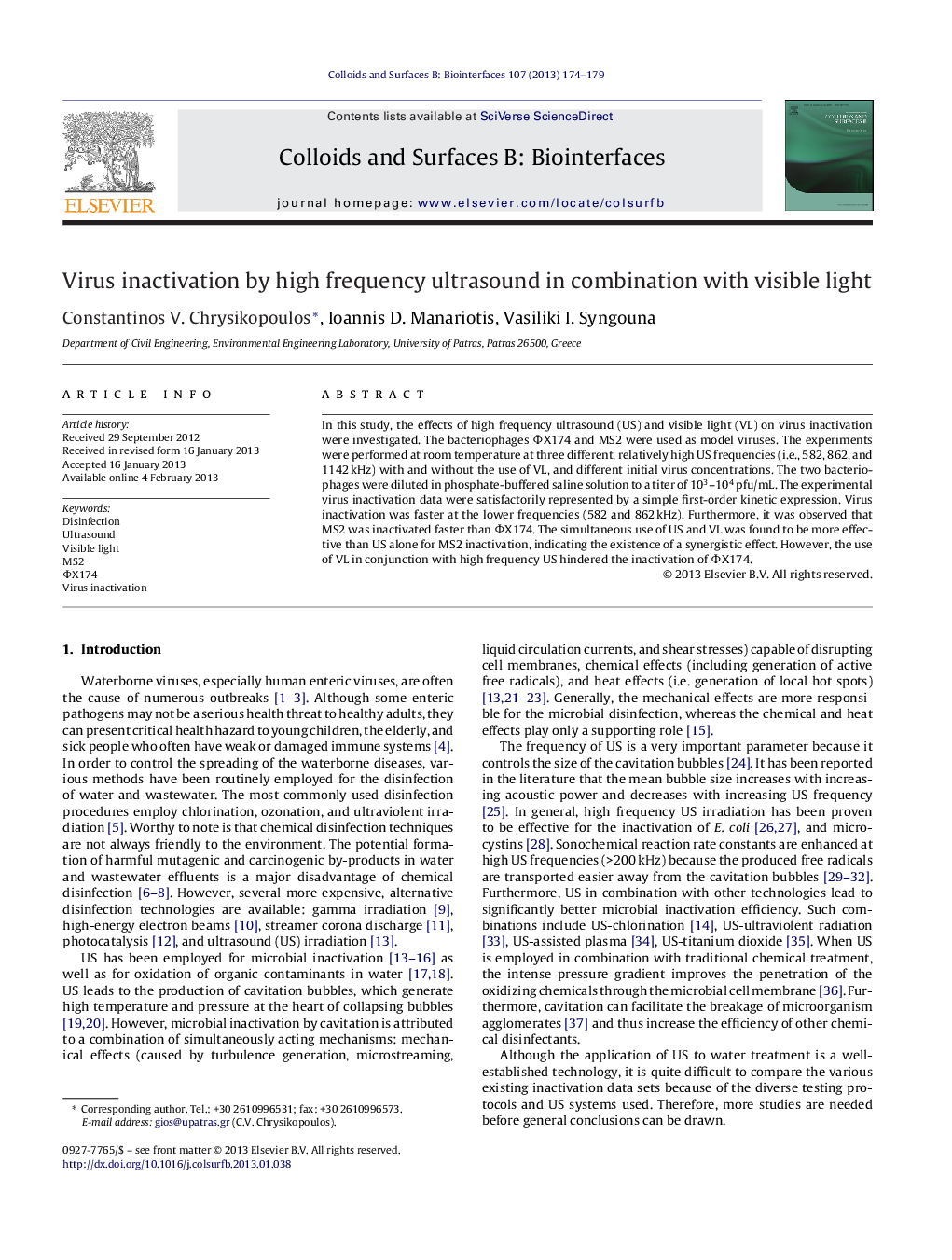| Article ID | Journal | Published Year | Pages | File Type |
|---|---|---|---|---|
| 600136 | Colloids and Surfaces B: Biointerfaces | 2013 | 6 Pages |
In this study, the effects of high frequency ultrasound (US) and visible light (VL) on virus inactivation were investigated. The bacteriophages ΦX174 and MS2 were used as model viruses. The experiments were performed at room temperature at three different, relatively high US frequencies (i.e., 582, 862, and 1142 kHz) with and without the use of VL, and different initial virus concentrations. The two bacteriophages were diluted in phosphate-buffered saline solution to a titer of 103–104 pfu/mL. The experimental virus inactivation data were satisfactorily represented by a simple first-order kinetic expression. Virus inactivation was faster at the lower frequencies (582 and 862 kHz). Furthermore, it was observed that MS2 was inactivated faster than ΦX174. The simultaneous use of US and VL was found to be more effective than US alone for MS2 inactivation, indicating the existence of a synergistic effect. However, the use of VL in conjunction with high frequency US hindered the inactivation of ΦX174.
Graphical abstractFigure optionsDownload full-size imageDownload as PowerPoint slideHighlights► MS2 and ΦX174 inactivation with high frequency ultrasound (582, 862, 1142 kHz). ► MS2 and ΦX174 inactivation with high frequency ultrasound and visible light. ► Virus inactivation was faster at the lower frequencies. ► Combined ultrasound and visible light was more effective only for MS2 inactivation.
